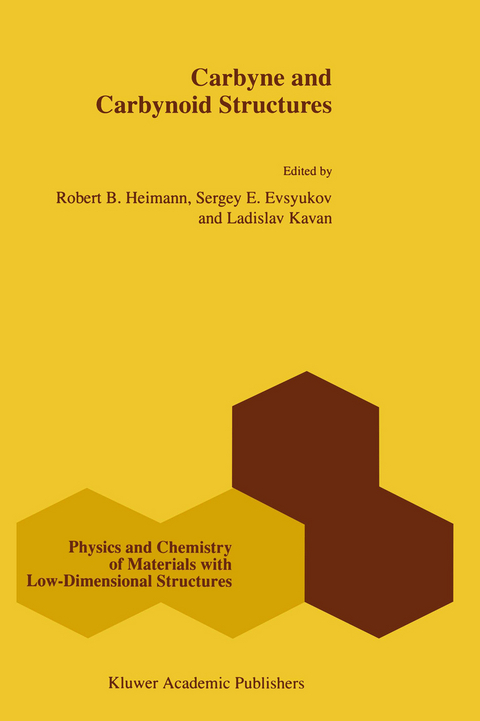
Carbyne and Carbynoid Structures
Springer (Verlag)
978-94-010-5993-0 (ISBN)
1: Introduction.- 1.1. The discovery of carbyne.- 1.2. The nature of carbyne: pros and cons.- 2: Carbyne and carbynoid structures in nature.- 2.1. Carbon-how many allotropes associated with meteorites and impact phenomena?.- 2.2. Other natural carbynoid structures.- 3: Syntheses of carbyne and carbynoid structures.- 3.1. Catalytic and electrochemical polycondensation reactions.- 3.1.1. Dehydropolycondensation of acetylene.- 3.1.2. Polycondensation reaction of halides.- 3.2. Chemical, photo-, and electrochemical transformations of polymers.- 3.2.1. Chemical dehydrohalogenation of polymers.- 3.2.2. Photo-and laser-induced dehydrohalogenation of polymers.- 3.2.3. Dehydrogenation of polyacetylene at high static pressure.- 3.3.1. Decomposition of hydrocarbons.- 3.3.2. Pyrolysis of organic polymers.- 3.4. Phase transformation of carbon materials.- 3.4.1. Condensation of carbon vapour.- 3.4.2. Ion-assisted condensation of carbon.- 3.4.3. Dynamic pressure synthesis.- 3.5. Electrochemical methods.- 4: Structural models of carbyne.- 4.1. Structural and electronic properties of polyyne.- 4.2. Kinked chains and layered structure.- 4.3. Carbyne intercalation compounds.- 4.4. Electron diffraction and microscopy.- 5: Properties of carbyne and carbynoid structures.- 5.1. Chemical properties.- 5.2. Thermophysical properties.- 5.3. Electrical and optical properties.- 6: Molecular and electron spectroscopy of carbyne structures.- 6.1. Raman and infrared spectroscopy.- 6.2. Electron spin resonance spectroscopy.- 6.3. Electron spectroscopy.- 6.4. Electron energy loss spectroscopy studies of carbynoid structures.- 7: Suggested technical applications of carbyne materials.- 7.1. Diamond synthesis from carbyne.- 7.2. Medical applications of carbynoid materials.
| Reihe/Serie | Physics and Chemistry of Materials with Low-Dimensional Structures ; 21 |
|---|---|
| Zusatzinfo | XVII, 446 p. |
| Verlagsort | Dordrecht |
| Sprache | englisch |
| Maße | 160 x 240 mm |
| Themenwelt | Naturwissenschaften ► Chemie ► Analytische Chemie |
| Naturwissenschaften ► Chemie ► Anorganische Chemie | |
| Naturwissenschaften ► Chemie ► Physikalische Chemie | |
| Technik ► Maschinenbau | |
| ISBN-10 | 94-010-5993-4 / 9401059934 |
| ISBN-13 | 978-94-010-5993-0 / 9789401059930 |
| Zustand | Neuware |
| Haben Sie eine Frage zum Produkt? |
aus dem Bereich


